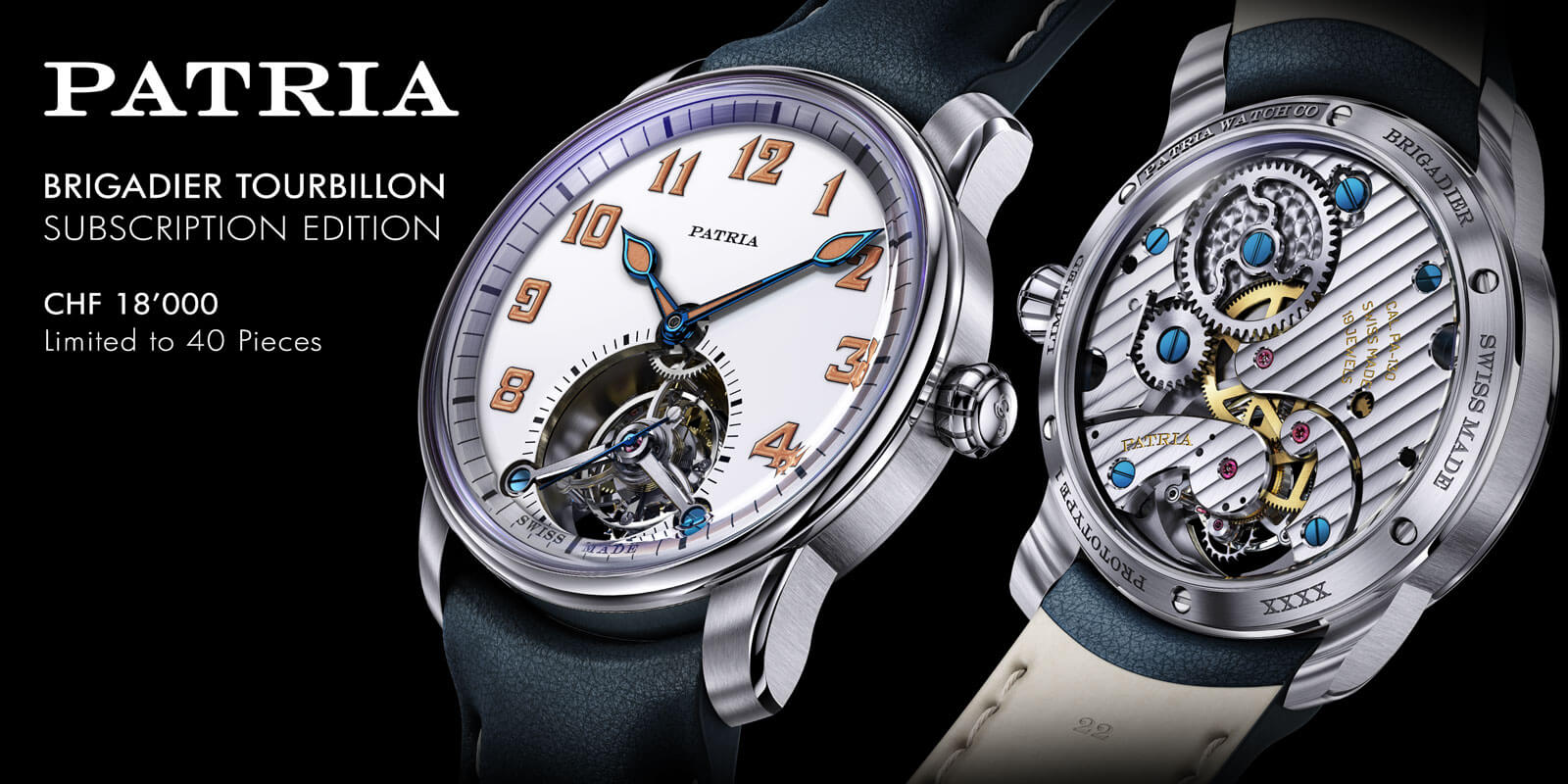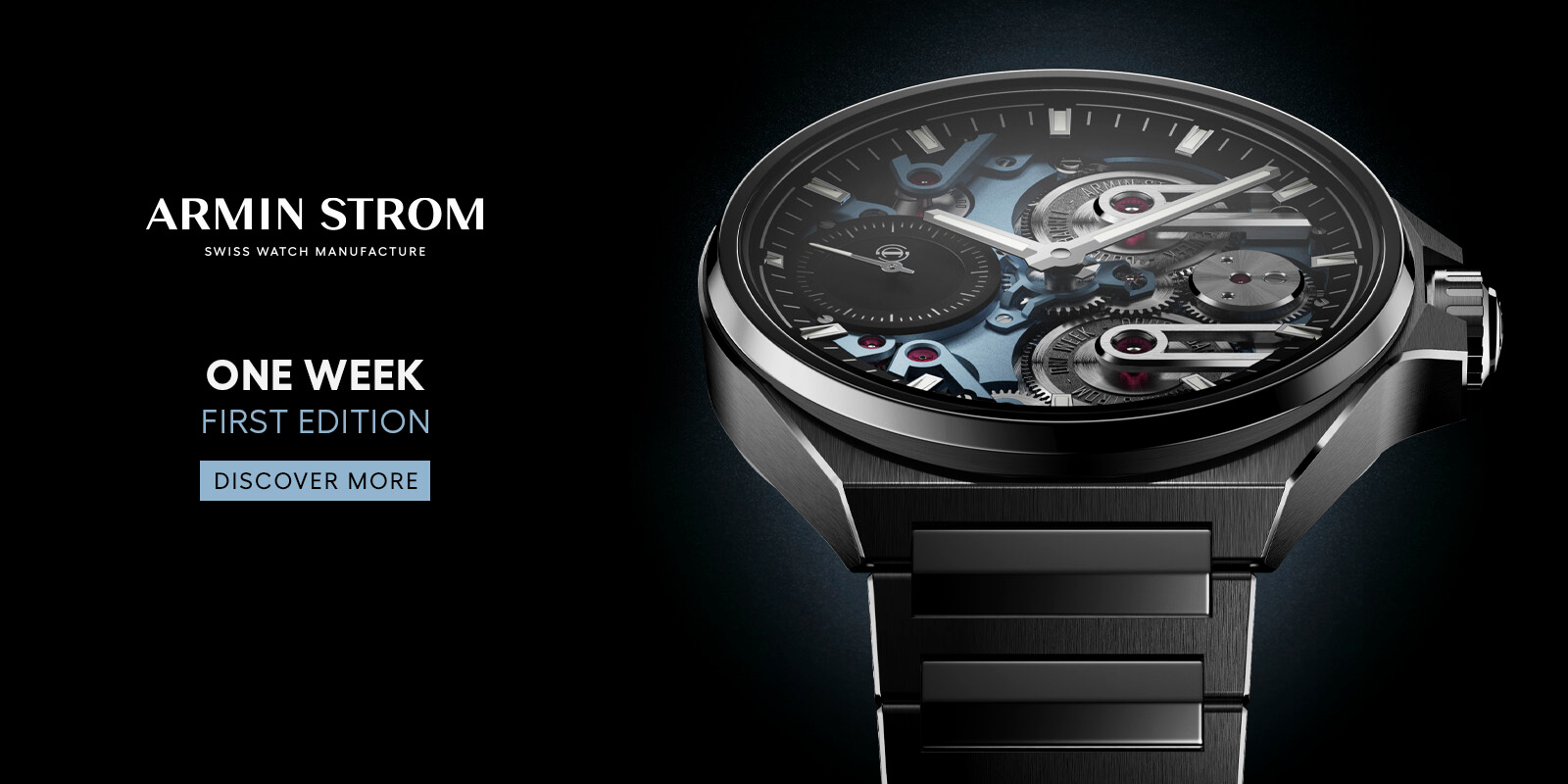The Golden Age of Rolex Movements Part III: Branding vs. Breakthroughs in Recent Years
by Tim Mosso
The last two decades have witnessed regular Rolex engineering advances, often in plain sight and in rapid succession. Despite these developments, Rolex remains a brand defined not by movements but by continuity, model families, and the Rolex image itself.
The root of Rolex’s soft-pedaled reputation for movement virtuosity lies in the company’s own branding strategy.

Rolex Sky-Dweller in white gold and stainless steel
Why Rolex movement innovation is overlooked
On movement engineering alone, Rolex should be mentioned in the same breath as Patek Philippe, Jaeger-LeCoultre, and Audemars Piguet. It is worthwhile to discuss the disparity between manifold Rolex watchmaking innovations and the brand’s lagging public image as an engineering vanguard.
————————————————————————————————————–
—————————————————————————————————–
Recent developments in Rolex complications proved the company to be adept at harnessing the romantic potential of complication engineering. The Cellini Moonphase from 2017 marked the first new Rolex moon phase watch since the 1950s.
With a moon display crafted of meteorite and enamel, the Cellini Moonphase likely caught even Rolex off guard as the most discussed Cellini debut in a generation.

Rolex Cellini Moonphase
Moreover, the Cellini’s use of a date hand, enamel cosmos, and meteorite moon disk speak to an ambition and lyrical grandeur absent even in the fearsomely complex Sky-Dweller and Yacht-Master II.
From the perspective of 1999, the origin point of this multipart overview, a watch like the Cellini Moonphase would have been a fanciful dream and an unthinkable production prospect.
Why, given all the foregoing, is the Rolex mechanical renaissance rarely acknowledged?
—————————————————————————————————–
—————————————————————————————————–
Designing movements; branding by design
The first reason is attributable solely to Rolex’s own choice: brand’s reign.
While the company’s PR office rarely fails to note the mechanical pedigree of its new movements and technologies, this emphasis never persists long after the launch phase of a new product.
In order to maintain the timeless appeal of watches like the Submariner, Daytona, and Datejust, Rolex logically stresses appearance, name, and heritage. Positioning a watch as a technological milestone invites obsolescence as soon as a competitor or Rolex itself surpasses the once-heralded product.
Omega might build a movement to shame the Rolex 3135, but Omega cannot build a “Submariner.” Keeping the emphasis on watch models – and the Rolex brand above all – keeps Rolex above the fray.

Rolex Submariner Reference 116610 (photo courtesy WatchBox)
Rolex encourages all discussions of its brand to emphasize continuity, not change. The firm revels in the fact that a 1963 Daytona and a 2019 Daytona are recognizably from the same lineage. The movements have little in common, but overt design language captures the public imagination and bridges the half-century gap.
Whether by design or default, Rolex has not revisited display case backs since the Cellini Prince experiment of 2005, so even the most redoubtable Rolex movements remain faceless black boxes for the time being.

Rolex Cellini Prince Caliber 7040 (photo courtesy WatchBox)
Furthermore, Rolex has kept its “experiments” and its core models safely separate.
The Submariner and GMT remain conservative offerings. While the current Daytona was revolutionary in 2000, it remains fundamentally the same watch nearly two decades later.
The Cellini Moonphase, Sky-Dweller, and Yacht-Master II limit Rolex’s exposure to failure by keeping legendary model lines segregated from technological leaps of faith. In other words, the wait for an annual calendar Rolex dive watch may be a long one.
Second, the modern era of watchmaking has been one of mechanical miracles. And miracles cease to be when they become routine.
—————————————————————————————————–
—————————————————————————————————–
Modern-day complication fatigue
Since 1999, every significant complication aside from the minute repeater has been democratized to the point of debasement.
There exist $15,000 TAG Heuer tourbillon chronographs, while certain perpetual calendars and rattrapante chronographs retail for less than $10,000. The apex of the market has witnessed Greubel Forsey pack one, two, or even four tourbillon regulators into a single watch; Patek Philippe’s Grandmaster Chime offers 20 functions; and Vacheron Constantin crammed 57 complications into a pocket watch.

Philippe Philippe’s Grandmaster Chime
Moreover, complicated watchmaking has lost much of its human element. The days of Dominique Loiseau and Kurt Klaus drafting grand complications on paper are fading memories.
The twenty-first century’s avalanche of semi-autonomous CNC devices, CAD/CAM design techniques, and specialized movement contractors like Complitime, Renaud & Papi, Chronode, Agenhor, Christophe Claret, Le Cercle des Horlogers, and Concepto have assigned a rote element to each model year’s rollout of complexity.

Harry Winston Opus 10 by Jean-François Mojon/Chronode
Against that backdrop of excess, Rolex annual calendars, regatta timers, and synthetic hairsprings seem both unremarkable and uninspiring. This fact isn’t down to Rolex as much as it is a reflection of an industry struggling to find its soul and purpose.
—————————————————————————————————–
—————————————————————————————————–
Case in point: Rolex’s disappearing Syloxi hairspring
While finished products – especially unprecedented complications – steal headlines and mindshare, watchmaking often is defined by unseen details. On that count, this golden era of Rolex movement design offers a virtually endless parade of detail refinements softly launched and sparsely mentioned.
Consider the low-key arrival of Rolex’s first silicon hairspring in 2014 as a case study in underselling innovation.
Despite Rolex’s early expression of interest in silicon technology – along with Swatch Group, Patek Philippe, and Ulysse Nardin – the Geneva juggernaut was the last of the original development partners to implement a silicon hairspring.
As part of the research consortium with the above-mentioned and Swiss lab CSEM, Rolex had access to the material science that yielded Patek Philippe’s Spiromax hairspring of 2006 and Omega’s Si14 hairspring of 2008.

Omega Seamaster Aqua-Terra 15,000 Gauss
Recall for a moment the PR push behind the rollout of silicon from both Omega and Patek Philippe. Patek Philippe’s Advanced Research tag spanned half a decade of marketing pomp designed to suggest that this technology was 1) unique to Patek and 2) something other than an industrial process supplanting once handmade components.
Omega’s brand handlers screamed from the rafters, “>15,000 GAUSS.”
Rolex did nothing of the sort.
Patient for a verdict on the success of its peers’ experiments, Rolex didn’t even seek to protect its intellectual property stateside until July of 2011 in U.S. patent number 8562206, a roadmap detailing Rolex silicon hairspring design and the related fabrication process. Protection of the monobloc silicon spring-and-collet integration (patent no. 9411314) followed in October of 2012.

Rolex Syloxi silicon balance spring
The resulting silicon hairspring gains resistance to thermal timing drift via a thin coating of silicon oxide. Just as relevant to precision is the use of deep reactive ion etching (DRIE) to create a “centered” mass effect on Rolex silicon springs. The concentric beating-behavior that has dictated hand-shaped Breguet overcoil architectures in generations of Rolex hairsprings is achieved despite the flat-profile and mechanized fabrication of silicon.
Patek Philippe and Omega have used the same technique to standardize six-position adjustment of new calibers with silicon hairsprings; this is rare in the realm of ferrous flat hairsprings.
—————————————————————————————————–
—————————————————————————————————–
Burying the lead: soft on silicon
The 2014 rollout of Rolex’s Syloxi hairspring in Caliber 2236 is emblematic of the company’s conservative public-facing engineering strategy. Rather than launch this major revision in a flagship like 2014’s first ceramic-bezel “Pepsi” GMT-Master II or that year’s Sea-Dweller 4000, Rolex soft-launched Syloxi in the ladies’ Pearlmaster 34.

Rolex Oyster Perpetual Datejust Pearlmaster 34
The company carefully chose an extravagant and expensive ladies’ watch in order to ensure low initial volumes. Moreover, this move ensured a safe firewall between the reputational risk of a new technology and brand-defining men’s steel sports watches from the Submariner, Daytona, and GMT families.
As if to keep the lid on volumes and expectations, Rolex chose the mid-size 2015 Yacht-Master 37 mm as the second Syloxi roll-out platform.

Rolex Oyster Perpetual Yacht-Master Reference 268655
Silicon hairspring manufacture is a significant feat of technology that Rolex customers never will see. As with its innovations in LIGA fabrication, Rolex mostly has subsumed its silicon tech to the primacy of its models and brand.
Rolex movements: fast forward
The final installment of this series will look toward the future of Rolex watchmaking. Precedent-setting Rolex patents for existing watches will be discussed in order to illustrate the journey of a Rolex watch from engineering brief to the collector’s wrist.
Finally, recently patented Rolex technologies including atomic wrist timekeepers, programmable travel time displays, split-time chronographs, and exotic escapements will be examined in detail.
Quick Facts Rolex Cellini Moonphase Reference 50535
Case: 39 x 13.4 mm, pink gold
Movement: automatic Caliber 3195, 48-hour power reserve, 4 Hz/28,800 vph frequency, officially certified C.O.S.C. chronometer
Functions: hours, minutes, hacking seconds; date, moon phase
Price: $26,750
Quick Facts Rolex Oyster Perpetual Pearlmaster 34
Case: 34 mm, Everose pink gold, diamond-set bezel, diamond set bracelet links
Dial: diamond-paved mother of pearl dial
Movement: automatic Caliber 2236 with Syloxi hairspring, 55-hour power reserve, 4 Hz/28,800 vph frequency, officially certified C.O.S.C. chronometer
Functions: hours, minutes, hacking seconds; date
Price: $105,350; additional precious metals, dial options, and gem setting at varying prices
Quick Facts Rolex Oyster Perpetual Yacht-Master Reference 268655
Case: 37 mm, stainless steel with platinum bezel
Movement: automatic Caliber 2236 with Syloxi hairspring, 55-hour power reserve, 4 Hz/28,800 vph frequency, officially certified C.O.S.C. chronometer
Functions: hours, minutes, hacking seconds; date
Price: $11,050; steel/gold and full precious metal options at varying prices
You may also enjoy:
The Golden Age Of Rolex Movements Part I: Sowing The Seeds Of Greatness
Rolex Milgauss Review – The Most Underrated Rolex?
Exceptional Movements In History: Rolex Caliber 1575, The Watchmaker’s Watch
Rolex Case Study: How Many Watches and How Much Money Does Rolex Make?
Rolex Submariner vs. GMT Master II: Small Differences, Difficult Decision






Leave a Reply
Want to join the discussion?Feel free to contribute!